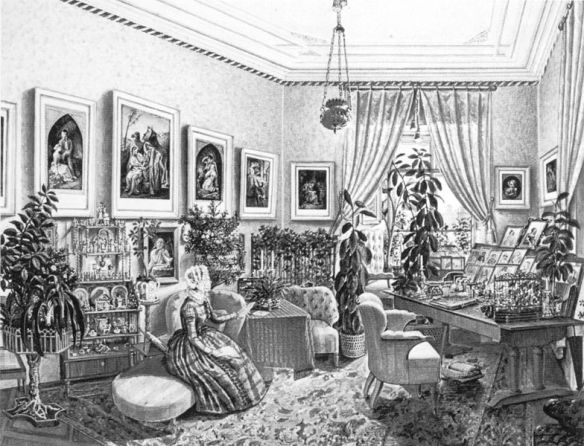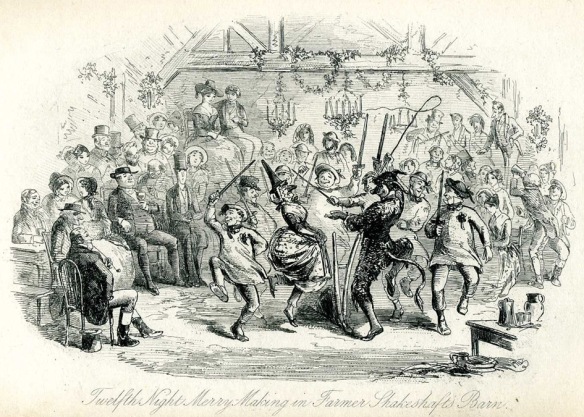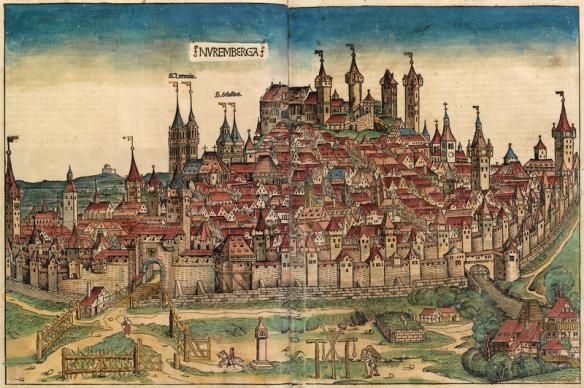After the bright and breezy Sunken Cherry Cake, something altogether more grown-up and seductive – Altwiener Schokoladentorte.

Altwiener Schokoladenkuche: note the chapter heading, top right: Big Cake-Nostalgia. That’s what this cake is all about. That and chocolate, apricot jam, hazelnuts, coconut and sherry.
Those lovely compound nouns need some unpacking. Schokoladentorte is really not that hard:
Schokoladentorte = Schokoladen + Torte = Chocolate torte
Not a cake – a torte. That means barely any flour, and layers of tasty goodness in between and around the cake – sorry, I mean torte – layers. In some tortes these layers are buttery, creamy fillings. In this cake it’s apricot jam which goes unbelievably well with chocolate.
Altwiener is a bit harder to unpack, because it’s not about the individual words, it’s about a whole host of associations that go with the individual words. Let’s start with the basics, and then embellish:
Altwiener = Alt + Wiener = Old Viennese
Old Viennese? Eh? An old man with bad teeth, little round glasses and bow tie? A hotdog that has been left to wrinkle at the back of the fridge?
No, no, no. It’s like this.
‘Old’ as in the good old days, times that have passed forever and are out of reach, but can just be glimpsed in the rear view mirror as you turn the bend, in the faded photos in a shoe box in the attic. The good old days when life was comfortable and secure. People, horses and dogs were more elegant, and had better manners. Houses and cars were beautiful and things were made of wood, stone and metal, not plastic. In spring the birds sang, in summer the sun shone, in autumn all the trees turned to bronze and gold, and the winter was frosty and blue…Vienna as in, well, Vienna. The capital of Austria, and once – in the good old days – capital of the Austro-Hungarian Empire which for a monarchy, and a nineteenth century empire, was not all bad – certainly an impressive number of different nationalities, languages and religions rubbed along reasonably well between the borders most of the time.
I have never been to Vienna and I was born long after the Austro-Hungarian Empire was finished (at the end of the First World War) but I have read some Joseph Roth (try The Radetzky March), I have been to Budapest and Prague, and whether it’s accurate or not I have a powerful idea of what it might have been like. In my mind’s eye there are long avenues lined with trees and wide pavements. There are tall white palaces, hotels and apartment blocks. Parks with fountains, low hedges, gravel walks and flower beds. There might be a brass band.
There is certainly the Spanish Riding School where the riders and horses show off the elegance and good manners.
And there are cafes. Cafes with high ceilings, gilt mirrors, small marble tables, long banquettes, waiters in white aprons, overgrown pot plants and people talking and drinking coffee, having a brandy and talking, having a cigarette and talking, and certainly having cake. Or torte.

An Austrian lady sitting alone in her apartment, looking forward to meeting up with her friends at the cafe later and eating some cake.
So those two medium-to-long words, Altwiener and Schokoladentorte, convey many images and ideas beyond their basic components. And so it is with the cake (or torte). Because – and don’t take my word for this bake it yourself – the flavours of this cake really do capture and convey what the name suggests. It’s a rather delicious form of time travel.
Cake the Second: “Altwiener Schokoladentorte”
[NB You need to let the cake stand overnight to dry a little before you fill and cover it so unfortunately this is not a cake you can bake on a whim.]
Ingredients for one 26cm diameter spring-form cake tin:
8 egg yolks
1/2 teaspoon [top quality] vanilla essence
pinch of salt
180g caster sugar
8 egg whites
100g biscuit crumbs [I use Bonne Maman galettes which come wrapped in threes – you can crush them with a rolling pin before you take them out of the wrapper to avoid losing precious tasty crumbs]
100g grated dark chocolate
100g ground hazel nuts
butter for the tin
Filling and topping
2 shot glasses of sherry [+ a glass for the cook]
300g apricot jam [take any large bits out and stir until smooth]
100g grated dark chocolate
1 egg
200g icing sugar
60g creamed coconut [the kind that comes in a block and looks far too much like soap for something you are going to eat]
Lightly grease the cake tin with butter. Preheat the oven to 180C [reduce to 170C for a fan oven].
Beat the egg yolks with the vanilla, salt and half the sugar until they are foaming.
In a separate bowl, whisk the egg whites until they form a stiff snow [in English we say peaks – I prefer snow]. Bit by bit sprinkle over the remaining sugar, and keep beating until it’s all mixed in. [Literally:] It should form a knife-firm ice-snow [i.e. it should be like icy snow, so stiff that you could stand a knife up in it].
Fold the ice-snow into the egg yolk mixture. Stir in the biscuit crumbs, grated chocolate and nuts. [Do this quickly but gently].
Pour the mixture into the cake tin, lightly smooth it, and bake it on the second shelf from the bottom for 30-40 minutes.
Place the torte base on a rack and leave to cool overnight.
Cut the cake into three layers. [I have only ever managed two.]
Sprinkle each layer with sherry. Spread jam on two of the layers, and place one on top of the other, with the third layer on top.
Melt the chocolate in a bain-marie, and leave it to cool a little. Stir in the egg and icing sugar. Melt the coconut and stir it into the chocolate drop by drop. It should become creamy. Spread the topping over the top and sides of the torte. With a wide knife raise the topping into a wave pattern on the top of the cake.
Let the topping set completely before cutting the cake.
[Eat from your best china, with coffee.]














